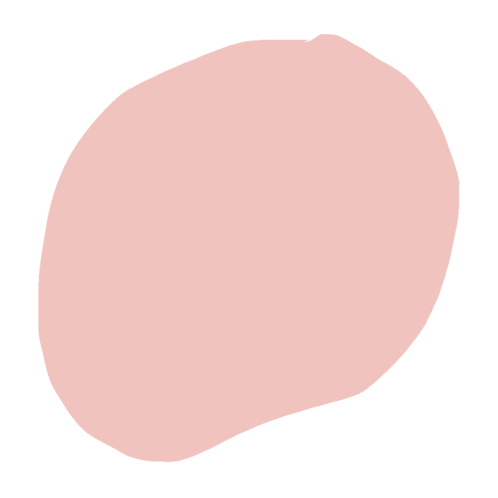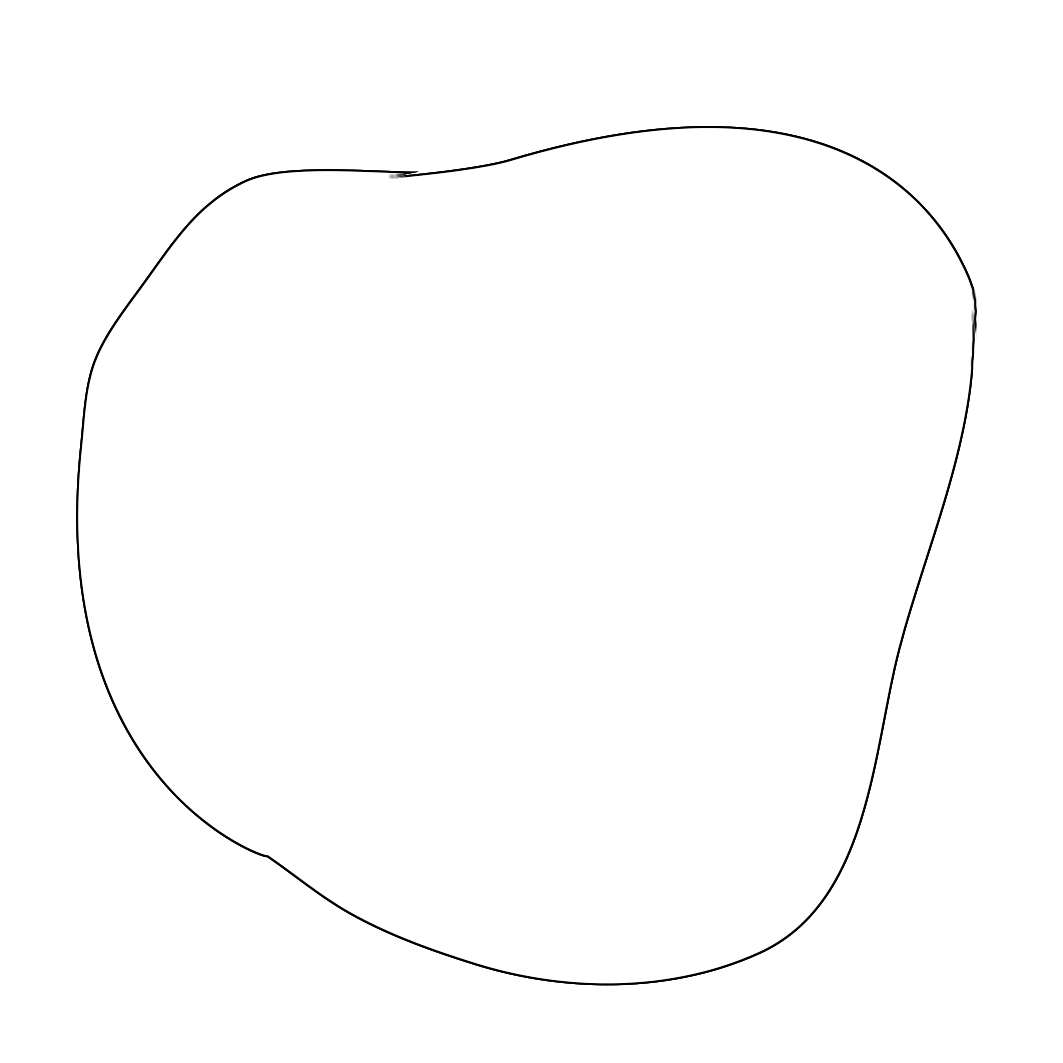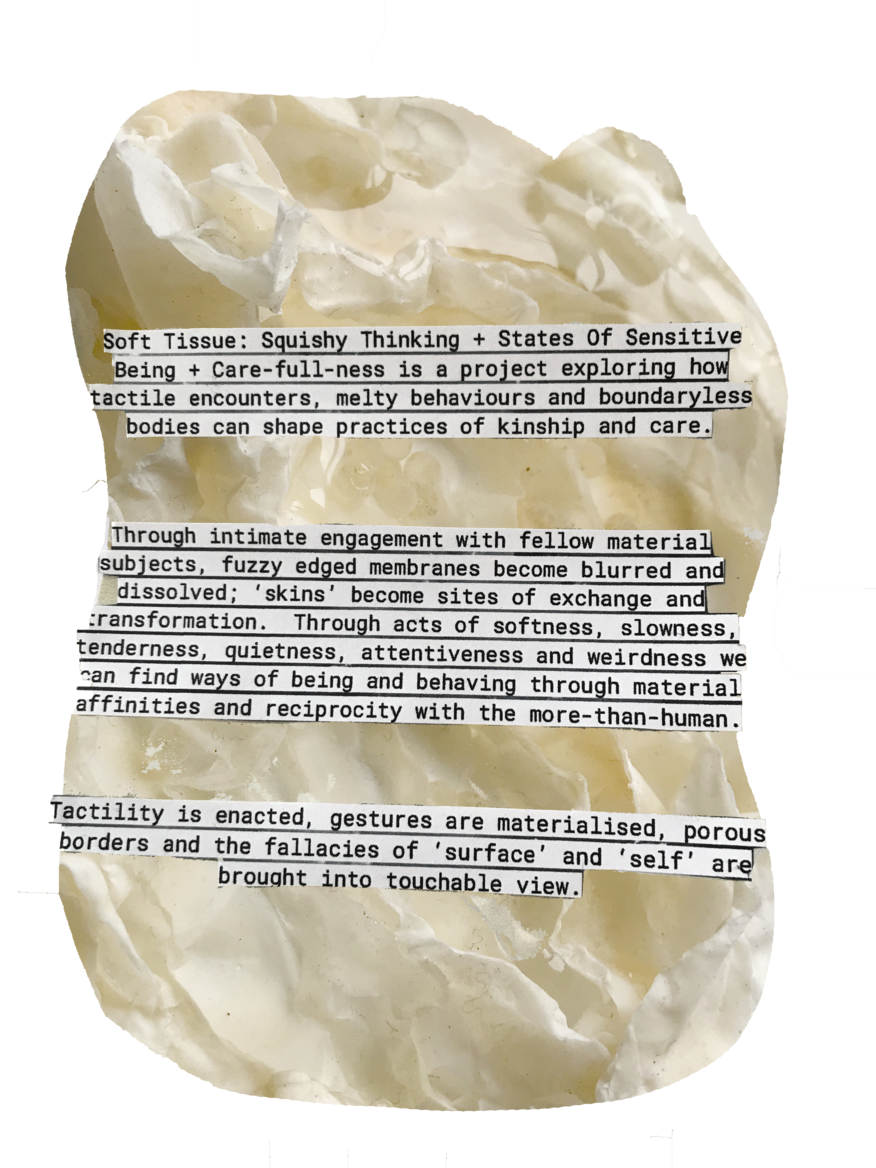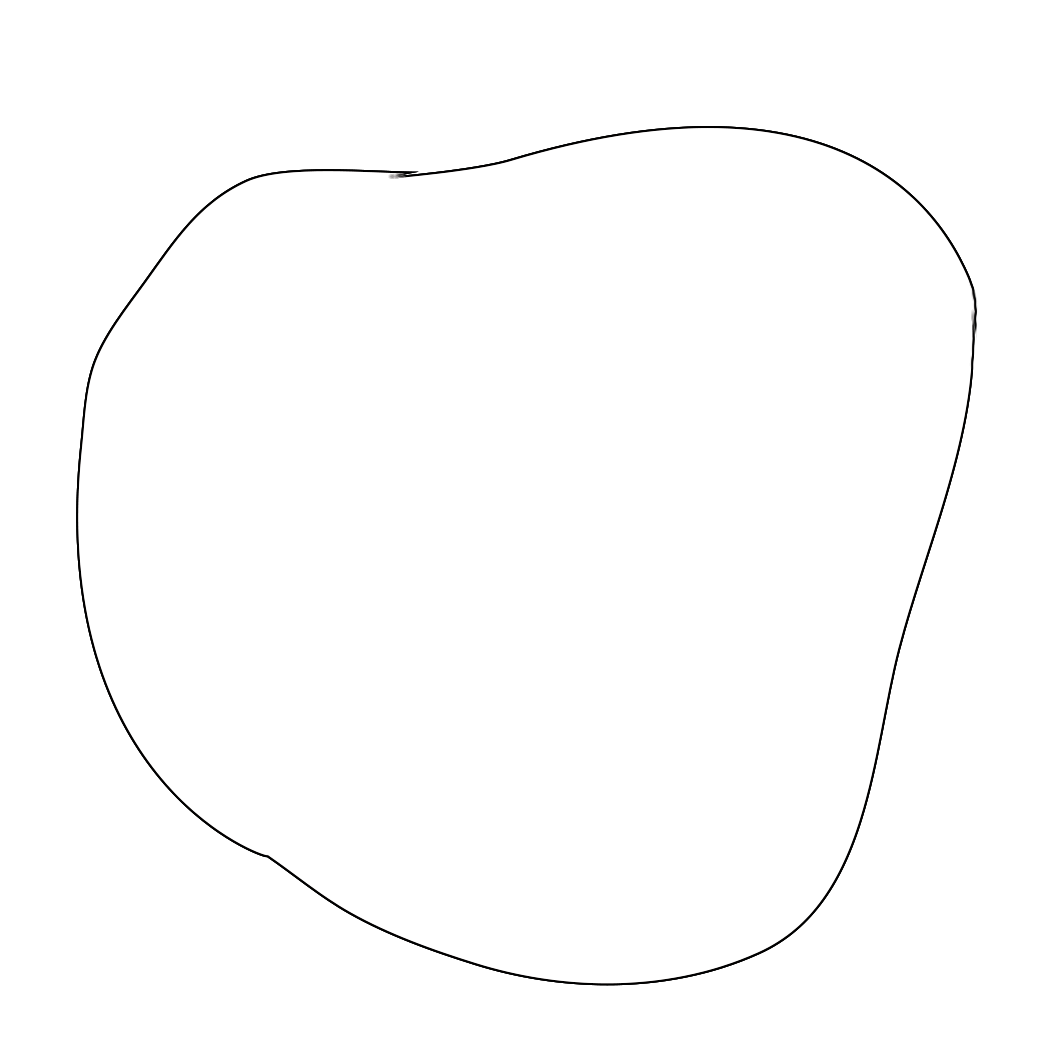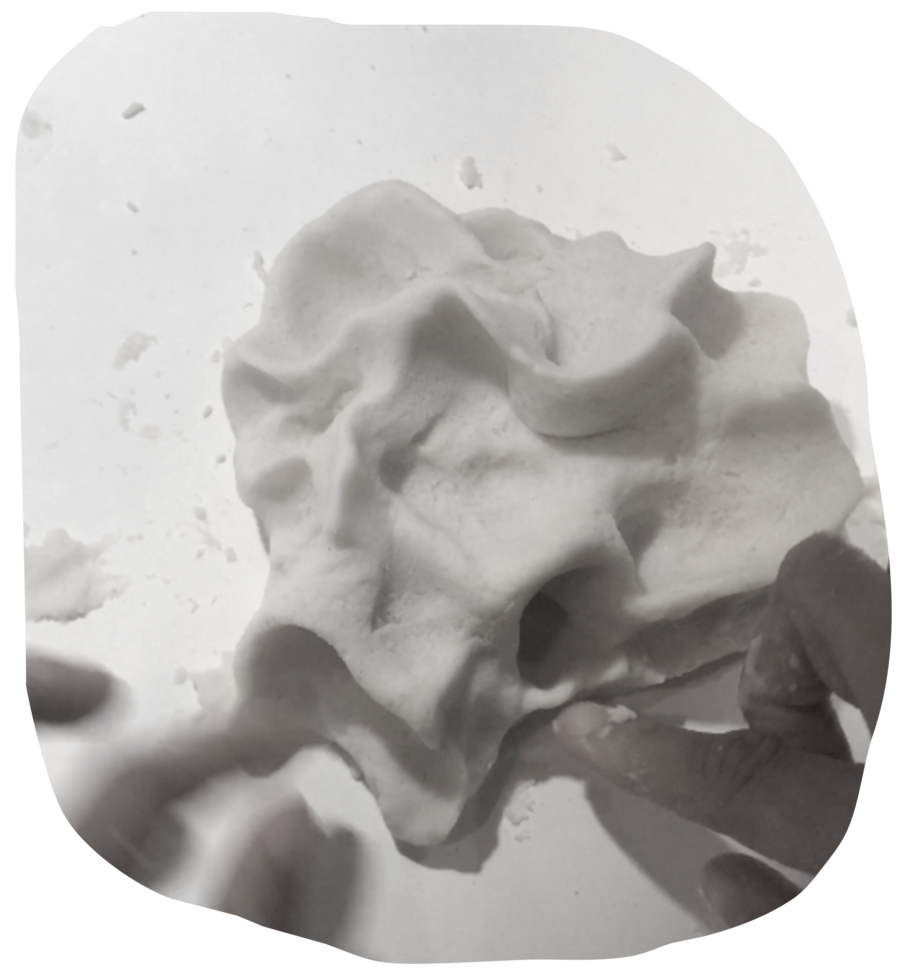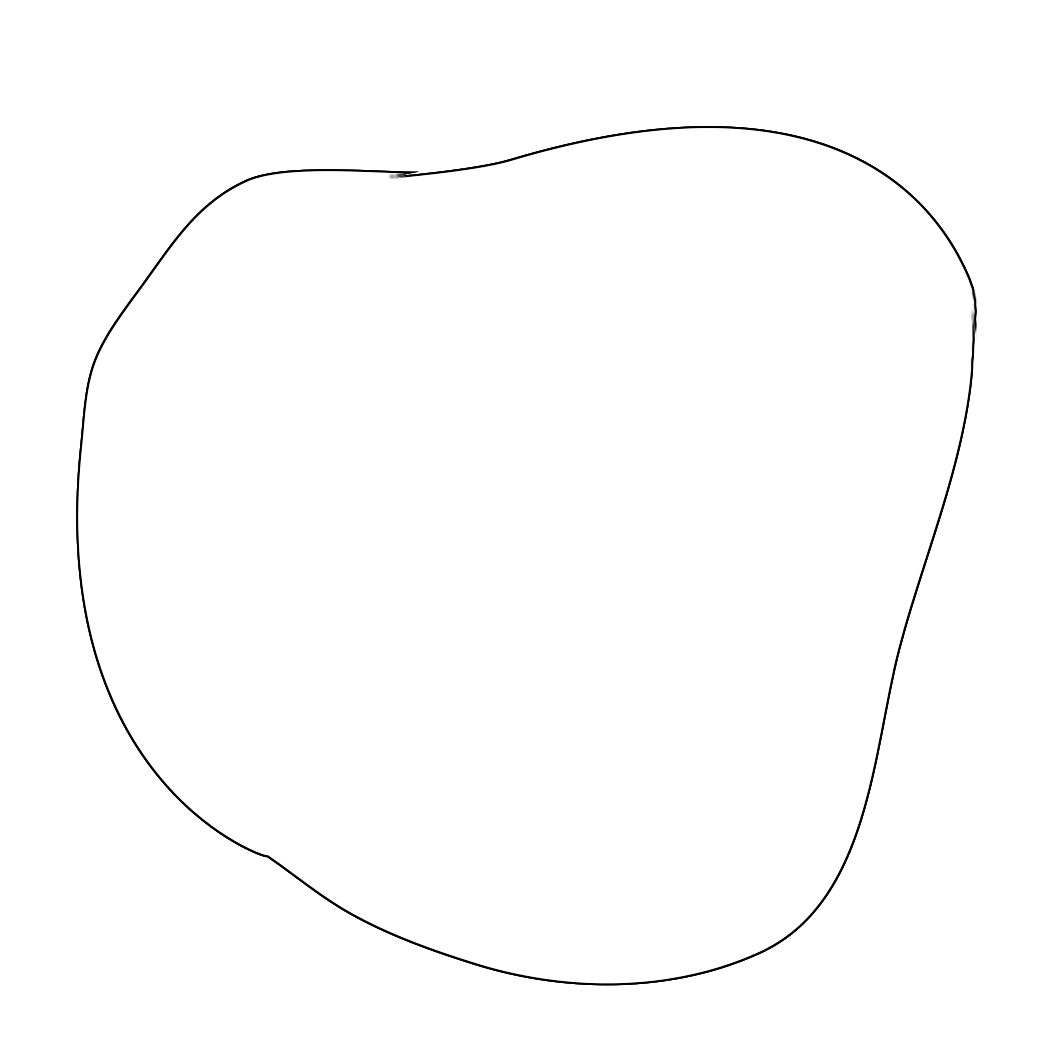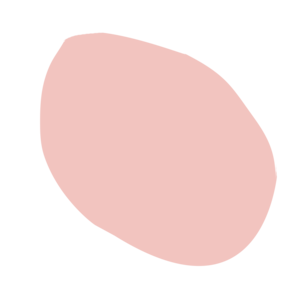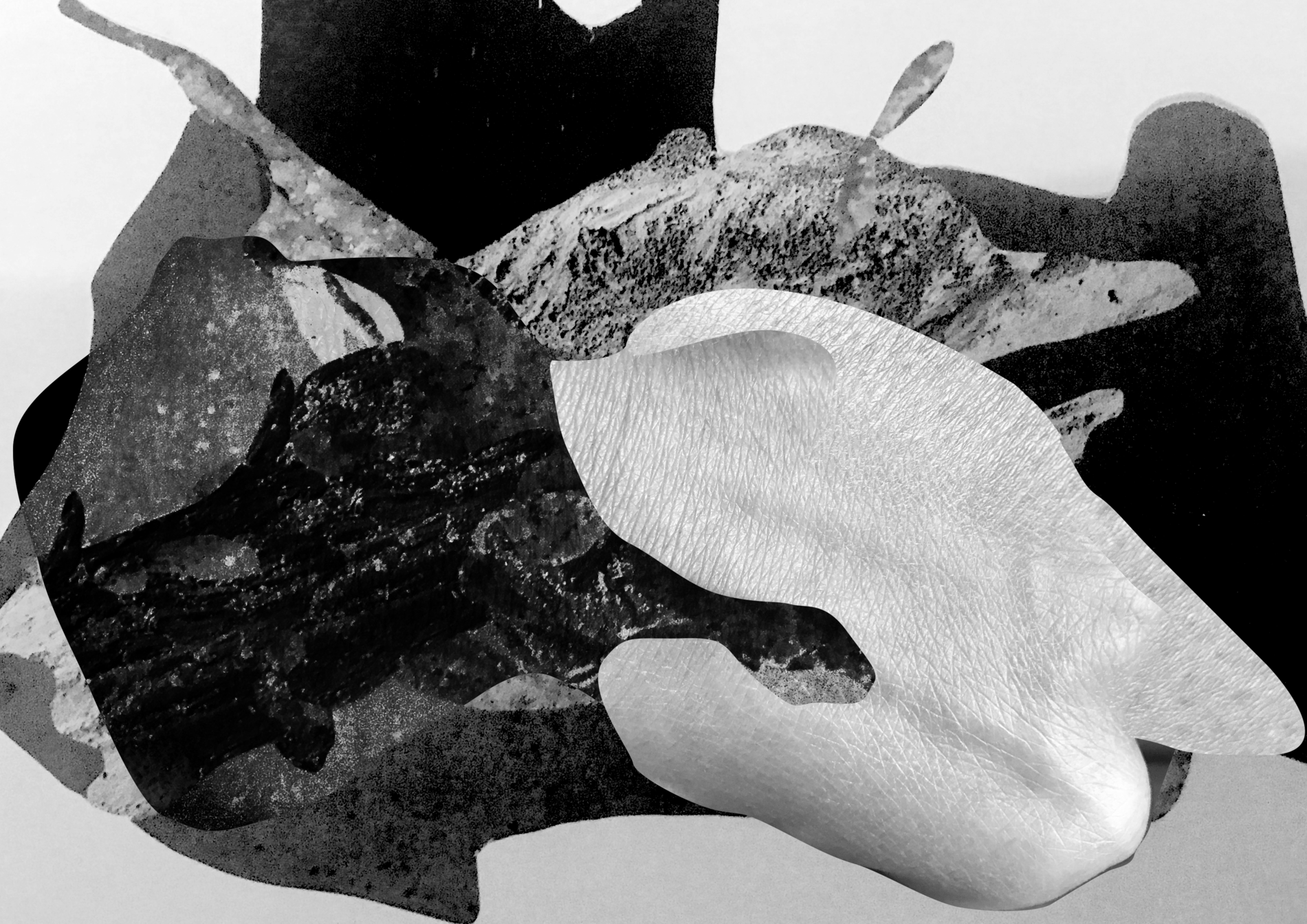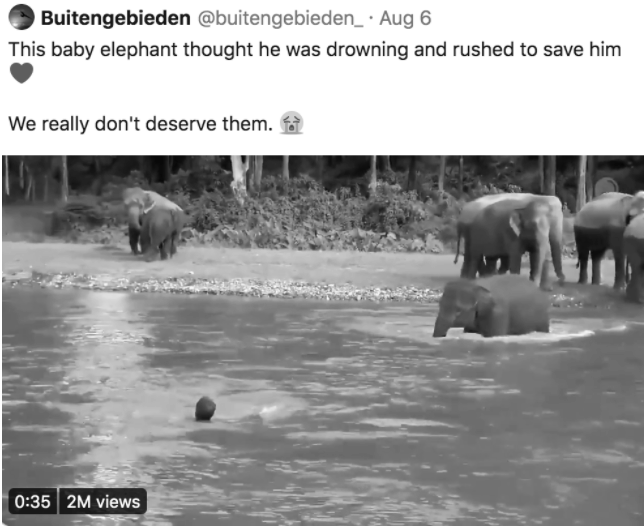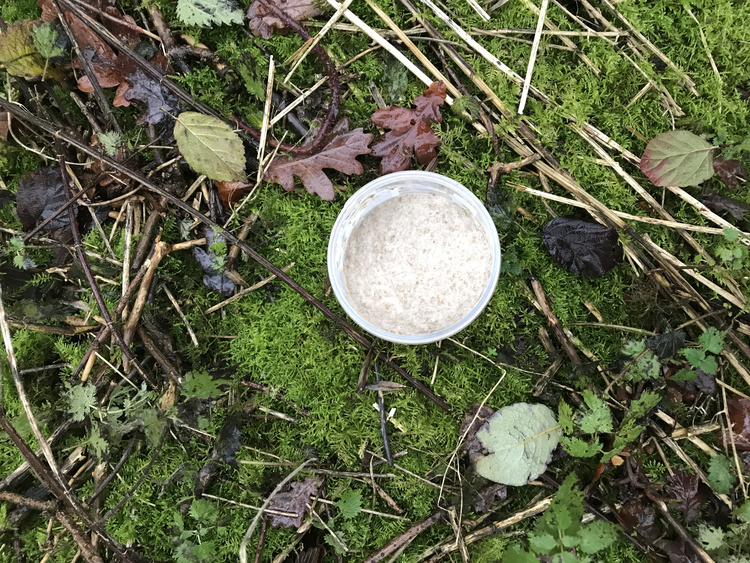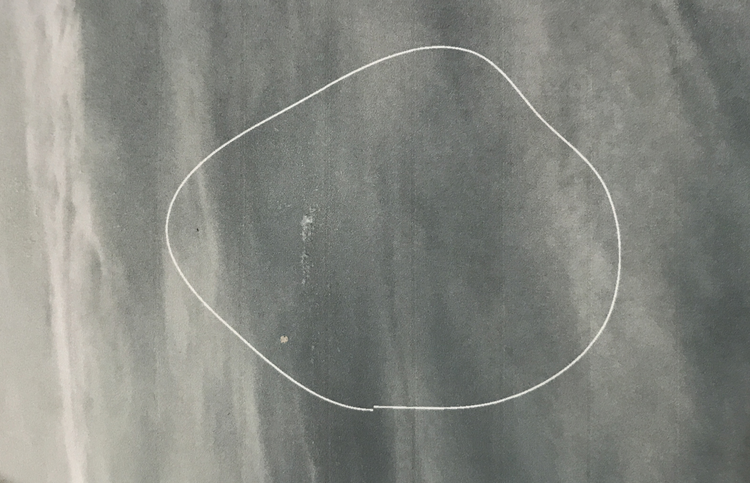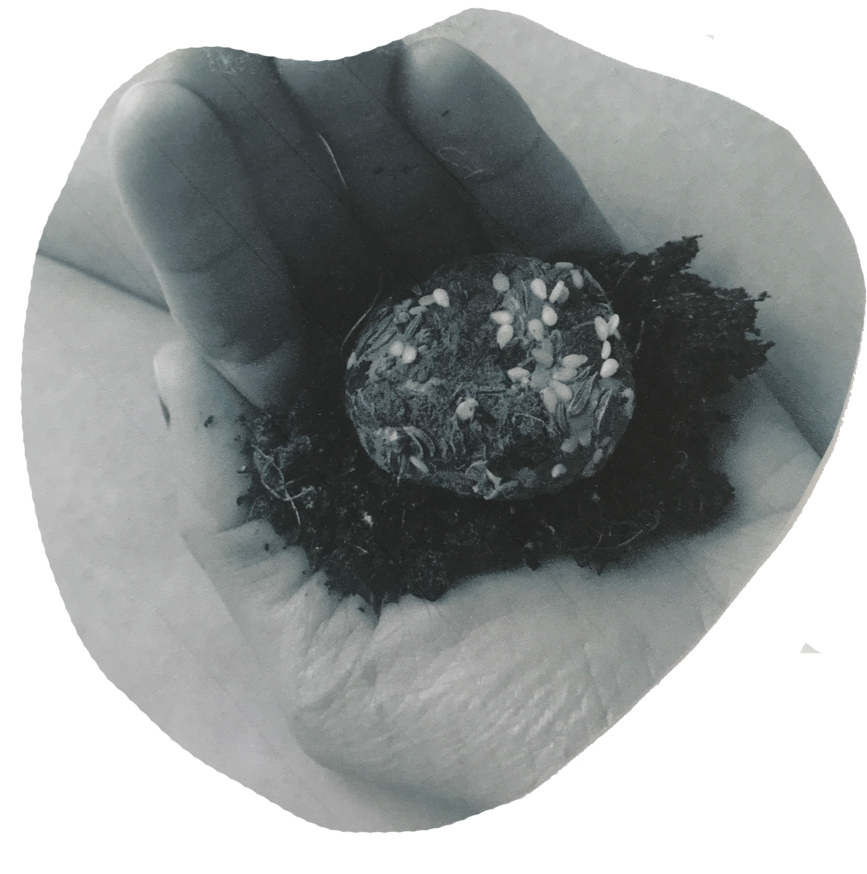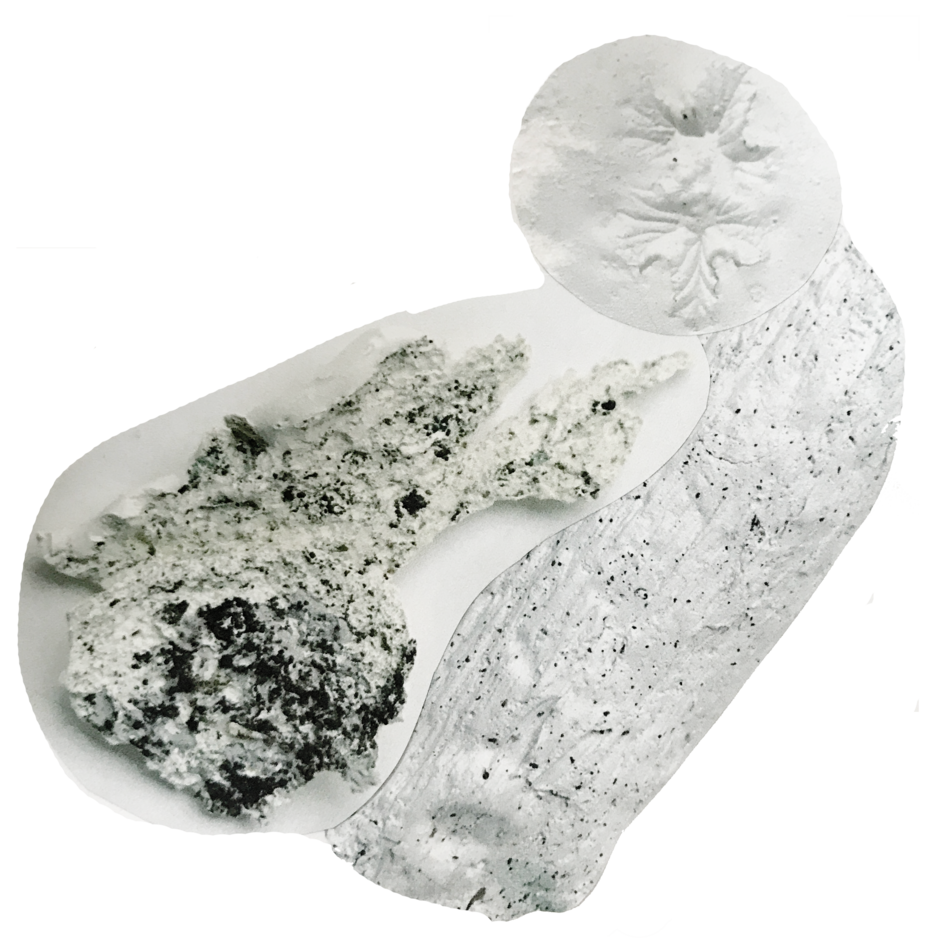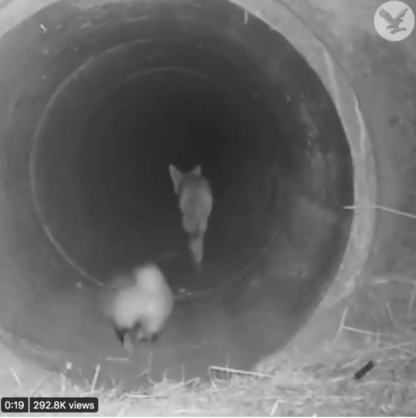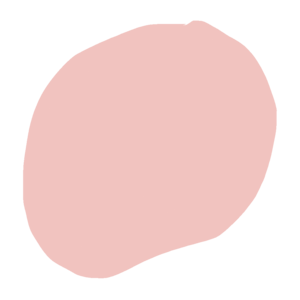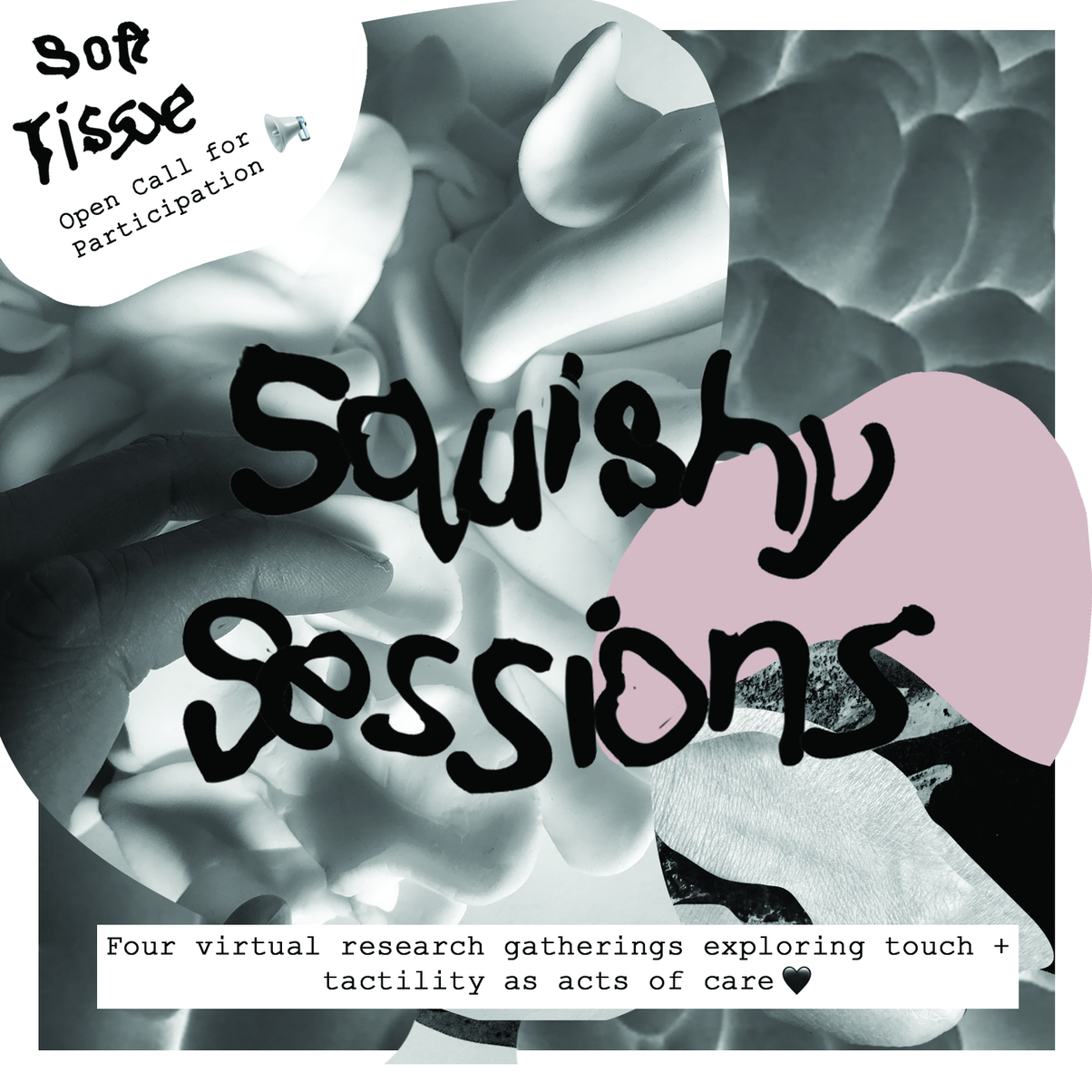Touch: The Knotty Sense
First Encounter
“Touch is the first sense by which we encounter the world, and the final one to leave us as we approach death’s edge.” - Laura Crucianelli
We touch all the time and are constantly touched in return. We receive texture, shape, weight, temperature, intent, acts - and that which we receive shapes our being and our world. The truly reciprocal sense, while we can look without being looked back at, we can’t touch without being touched in return.1 Our electrons dance an invisible choreography and the ‘things’ and imperceptible ‘non-things’ around us are in perpetual molecular dialogue with us. Rocks touch us back, plants touch us back, microbes touch us back. This is our first reminder that we are receiving, being tended by and in inextricable live partnership with Others whether our attention is attuned to it or not.
With this constant feed-back in mind - how can we seek to infuse these touchable returns with caring intentions, mindful gestures, considered sensitivities and gratitude?
I gravitate to an understanding of ‘care’ as the cultivation of a set of skills and sensibilities that seek to maintain and sustain all kinds of life. Part of my proposal is that if touch is powerful in its omnipresence then when wielded with intention it might become ‘a’ potent carrier of care-full acts. Such acts would allow seepage and slippage between individuals; it would feel for the more-than-human and sense callings through curvature.
“We have to consciously study how to be tender with each other until it becomes a habit” offers Audre Lorde and I interpret this as an invitation to practice our tending, attending and tenderness equally between those who are like and non-like.
1. Have a wander / wonder - scroll text, hit play, flick through slides.
2. You can download the text in PDF here
3. Start with ‘Part 1: Contexts of Touch’ then roam around ‘Part 2: Exploration Streams’ as you feel.
4. Keep coming back for new content.
5. If you need anything in any easier-read format - get in TOUCH!
6. Keep your feelers out for the Squishy Sessions
#2 Touch as (Re)connecting Tissue
“The capacity of touch to connect inner and outer conditions, mind and body, self and world, underlies our ability to make imaginative connections. Touch is the sensory system that, by its very nature, infuses—and fuses—multiple dimensions of our experience.” - Rosalyn Driscoll
Is touch purely a mediator or could it be classed, with our new lenses, as a medium of its own? A connecting tissue between ‘impressions’ and ‘corporeality’? Touch possesses a world-making capacity on account of its ability to thread ‘ideas’ with ‘knowing’, ‘believing’ with ‘evidencing’.
Melancholy Metal and Prodding Wonder into Clay:
The Hand-Mind of the Artist
Writer Cathryn Vasseleu describes the artist's hand as becoming the medium of an “intertwined external and inner reality coming into being”.1 As artists our material artwork suspends times and worlds. Our whole sensorium, our catalogue of memories and imagination are synthesised through the making body. Our hands shape what we have experienced, our fingers prod wonder into clay, melancholy is moulded into metal, curiosity is stitched through the surface. Vasseleu describes how in the process of making gestural sculptures, Švankmajer literally thrusts and squeezes his pent-up emotions into the clay.2
Traces of ourselves are impressed in that material and emotion and affect become as valid a component as the atomic matter itself! In the context of the project of care, how might we be more care-full when we are in-touch with our material? Could we rehearse our intent for the outer world by replacing extractive bending, scraping, scratching, squeezing with more ‘expressive touch’ (Laura Crucianelli) where we practice gratitude to our material through stroking, caressing, coddling, kind-ing? Specific practices of course reflect this more literally - stitching becomes an act of c-o-n-n-e-c-t-i-n-g, kintsugi becomes r-e-p-a-i-r as c-a-r-e recognising an inherent worthiness - this should be healed if I have the ability and means to do so.
A vocabulary for Moving Matters and Affective Sensations
In the reverse, how can we speak to a subjectivity of matter and better understand how matter in fact moves us? I was atingled to encounter the work of the Mono-ha movement whose artists relied on affective sensations arising from matter expressed through colloquial words “dokitto” (jump of the heart), “zokutto” (chill in the spine) and “shibireru” (thrill). Mika Yoshitake explains, “mono locates the work not in its objective form but in the structure through which things revealed their existence.”3
Indeed, the material touches the distributed mind coursing through the atoms of the body, eliciting actions in the tendrils, tendons and joints generating affect, emotion, imagination where world-making can occur.
How much richness would our connections to the more-than-human world be if we could find the language to unify our physical, affective experience with our communication of it? Vasseleu once more explains that words possess “an eloquence that can manipulate human sensibilities”.4 We should be languaging more to do justice to our tactile encounters and expectations. For now - make it up until an alternative enters the shared vernacular.
#1 Slippery Skin + Porosity as Generosity
I have long been enthralled by the notion of the boundaryless body - where does my body end and another begin? Where does my body end and the ‘environment’ begin? We are by now well aware that bodies are bewildering galaxies, digesting material and chemical interplays between insides and outsides. Furthermore - the oldest cell in ‘my’ body is no older than 10 years old (where did those cells go?...). ‘My’ iron, calcium, carbon is borrowed from and will return to soils, rock, plants, fungi. We are landscape.
And the awesome revelations continue and continue. My point is you do not need to look hard to find the many artists, writers, thinkers, philosophers, spiritualists, scientists and ecologists who have contributed illuminating assemblies of words to describe the wonderfully fluid, drippy, melty, fuzzy, blendy nature of the boundaryless body. What I would like to draw due attention to, in the context of Soft Tissue, is how these concepts offer welcome comfort and a hand of reassurance reminding us that we are never alone and the weight of our existence is felt by the universe. Our matters matter.
In the context of the Soft Tissue project investigating touch and care, I melt into mycologist Merlin Sheldrake’s1 declaration that each individual is a “soft edged” ecology and anthropologist Natasha Myers2 reminder that our “contours are not constrained by physical appearance. [Y]our morphological imaginary is fluid and changeable.“ Reverting more explicitly back to the matter of care, our existence as a soft edged ecology somewhat obliges us to a community. The implication then is that one is required to undermine our own identity3, (take cover neo-liberal subject!) or as Michael Kaethler4 puts it a “limiting of the self for the other and recognition of one’s connectedness with others and objects”, which perhaps softens the soft edge...
What might we achieve if we invite our bodies to slip into community?
The permeable membrane could be figured as a site of caring and sharing. Materials are exchanged to allow the Other to flourish. Materials are over-shared in sacrifice. Materials are reserved to preserve. Porosity is generosity.
In Enlivenment, Andreas Webber reminds us that “life has the tendency to transform all available resources into a meshwork of bodies”, which to me engenders a sense of duty. We are caretakers of our material - treat those atoms well and be careful where and what we leak and seep.
#3 Sensing the Shared Realm
Touch is of course, very much a part of the shared realm. Philosopher and magician David Abram describes the sensory realm as the shared realm from which we can infer that we do not share the same affinity with the digital realm. As we have greatly increased our literacy in the LCD world speaking 1-0-1-00-1 via fiber-optic highways, so our sensing and sense-able capacities have hibernated.
AWAKEN DEAR SENSES! Inhale them open with the mulch of earth! Refresh them with a gust of iced air! Invite them as you sink into sssk-welll-ching mud. It’s not only time to dust them off but gift them with new ways of doing their work.
Part of this Soft Tissue project is about ‘protocols’ to-be-in-touch via our whole sensorium which in itself is bizarre - it’s like the whole essence of being human has muted. However, if we are open to a touch of strangeness and uncomfortability, the time has come for us to reawaken our inherent human magic.
It is out of this proposition that my Mediated Subjects experiments emerged - where I placed a natural object in front of me and let it guide my hands to create. Referring back to our friend Švankmajer via Vasseleu, she describes the animation of an object as not a property of things but something that is awakened through the senses, not intellect. We can literally bring things to ‘life’ through our sensory magic! We can also refer to Bill Brandt, placing found objects from the ocean into creature-like formation for ‘The Assemblages’ series.
Sensory touch and imagination
Natasha Myers offers that “perceptual experiments can rearticulate your sensorium and by imagining otherwise, and telling different stories, you can open up new sensible worlds.”1 Here, imagination becomes a vital ally in the sensory project. As children our imagination is at its ripest, ‘make-believe’ narratives breathe animacy into the objects around us, our toys talk back to us and the air becomes a medium for our imaginary friends. Many of us have permitted ourselves a moment of that child-like engagement with the world as we stroke and talk to our plants. Let’s extend that further!
Imagination is deeply overlooked in its role of the senses. Imagination does not just involve making images with your minds eye but also stimulating your muscles, nerves and tissue. Indeed, Švankmajer staged various games to “study the extent to which touch is capable of stimulating associative thinking and becoming an imaginative stimulus, as opposed to touch having a merely identifying or utilitarian function”.
#4 Tending as practice: Who is caring for who?
I find the notion of humans as ‘custodians’ and cultivators troubling. I embarked on my own gardening project as a means of tending, attending and learning from my plant kin. How can a garden be a place to learn care rather than a place of exerting control? In place of ‘weeding’ the ‘invasive’ species,and arranging, composing and prettifying for our own gratification, the garden can be a place to tend and attend and a site of learning about relations through handling.
Phytosociology is is the study of groups of species of plant that are usually found together. Plants live default multi-species existences where care is clustered and exchanged. Reciprocity is key, this is not ‘care with conditions’ but in the caring of others, care is received and the chance of that care enduring is greatly increased, benefiting all. How can we become practice being a part of a phytosocial cluster?
Kind Gestures + Creature Comforts
I am keen to decentralise the idea of ‘humans’ as the only givers of care. It is unnecessary to go in depth about the humans who have felt themselves worthy of governing have evidenced their lack of collective ability to extend care to each other, let alone the more-than-human realm. Subvert ‘creature comforts’ to ‘creatures comforting’ to open up an astounding array of examples of the more-than-human acting to preserve the Other and prevent harm, from the Douglas Fir that gifts its nutrients to Other species as it’s about to die to the dogs that help baby cheetahs with their social skills.





